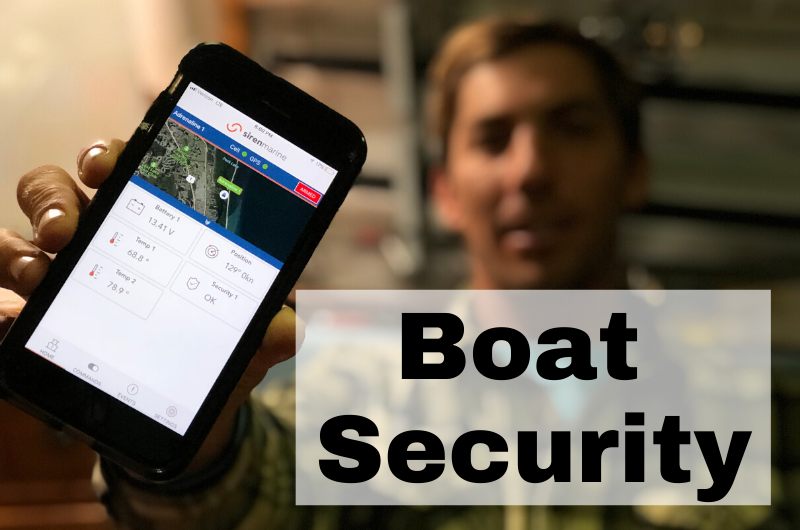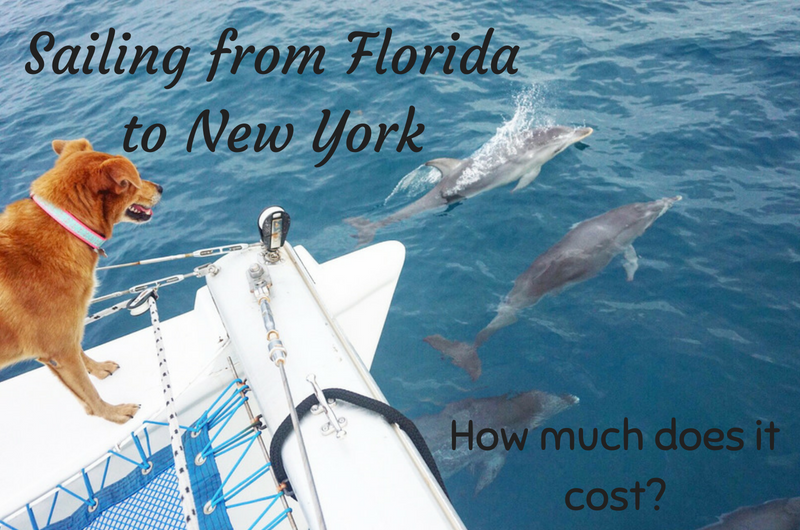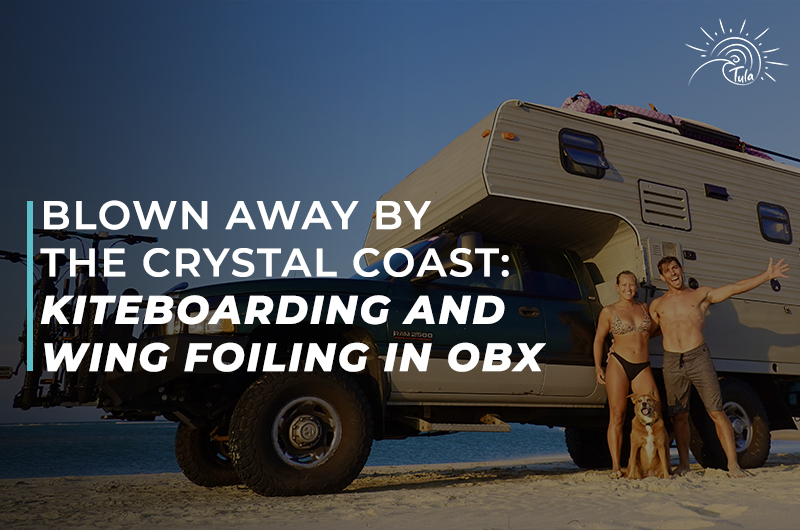As we get nearer to completion of our Seawind Catamaran we are starting to finalize our options for the boat. One of the most important option choice for us was if and which engines to upgrade to. The debate of inboard diesel vs gas outboard engines is a very interesting one in the sailing catamaran world. It is one that really had us on the fence. For now let’s go over all the engine options for the Seawind 1160 and although we are talking about this boat specifically the same points can and mostly do apply in some way to any other catamaran that may be debating inboard vs. outboard engines.
The Options
The Seawind 1160 lite comes standard with 20hp Honda’s with 20” shaft plus a 5” shaft extension mounted on a bracket on/under/through the bridge deck.
The first upgrade option is to 25hp Yamaha high thrust outboards w/ high thrust props and the same 20” shaft w/ 5” shaft extension.

Outboard engines on sailing catamaran
Lastly, Seawind offers an upgrade to 29hp Yanmar inboard diesel engines (3YM30) with sail drives.

Yanmar 3ym30 with saildrive
Cost
We won’t get into exact costs here because they tend to fluctuate from the engine manufacturers and distributors but what we can say is the upgrades to the 25hp high thrust Yamahas costs less than 1% of the base price of the boat and upgrades to the Yanmar 3YM30 inboard diesels costs 6%-7% the base price of the boat.
Fuel type, tankage, and location
The Hondas and Yamahas obviously run on gasoline whereas the yanmars are diesel. The gasoline tanks total about 71.3 gallons and are located in external lockers just forward of the mast as to be isolated and vented overboard below the bridge deck. The 3ym30 yanmars come standard with about 95 gallon total capacity with each tank being located in the bilge area roughly centered for and aft in each hull. Besides the obvious fuel capacity difference there are some other things to think about in this category. Many people argue that having diesel fuel onboard is safer than combustable gasoline which maybe true in theory but between ABYC standards and the quality that all Seawinds are known to be built to, it is unlikely that we would have a problem with gasoline stored and safely vented. In favor of gasoline as a fuel source, some people like the idea of having fewer different KINDS of fuel aboard. In the case of gas outboards we would potentially have the same fuel source as our tender so that our spare fuel canisters could be extra capacity for both our tender or our main engines. Additionally, if we chose the outboard option we could also choose the same exact engine for our tender so that parts, spares, filters, etc. could be transferable between all three engines. Lastly, the tankage location is a consideration. Would we prefer to have the diesel tanks which are located in the bilge and have extra storage in the lockers in front of the mast or have the gasoline tanks there and more storage in the hull bilges. These may be minor points in the grand scheme of these option decisions but none-the-less things to consider.
Fuel Consumption, Range, HP, and Torque
Hp is Hp at a given RPM but the things that can really fluctuate between these engines is torque and consumption. The 25hp high thrust outboards have about 60% more thrust in forward than the 20hp Hondas and 70% more thrust in reverse due in part to the fact that the Yamahas divert it’s exhaust out the leg instead of behind the prop in reverse. Diesel inboards are known for their torque and will have considerable more torque than either of the outboard options. One of the biggest factors in choosing which engines to go with are fuel consumption and range. According to Seawind the yanmars use about 70% the amount of fuel than the outboard options. I thought it would be a good idea to ask some current 1160 owners about their experience in fuel consumptions so I asked the Seawind owners group and out of a small but reliable sample size it seemed like the Yamaha outboards were seeing 1.5-2gph at ~6.5-7 knots boat speed and the yanmars were .9-1gph at ~7 knots boat speed this all is an average over real life motoring conditions. I didn’t get any intput from Honda owners, I think because almost everybody who chooses the outboard option goes with the Yamahas. This anecdotal evidence paired with the fuel capacity of the engines gives a Seawind 1160 lite with Yamahas a ~250 nautical mile range and with Yanmar inboard diesels a ~665 nautical mile range all a conservative estimate.

Fuel Consumption outboard vs inboard Seawind catamaran
Electrical Power
This is a category that was very important to us because we are going with a lithium house bank and I will explain why that is a factor in a moment. Outboards in general do not produce much electrical power especially compared to inboard engines and their big alternators. In our case the Honda’s produce about 12amps of power each at 12v, the Yamahas about 16amps each at 12v and the yanmars 120amps each at 12v. This is quite a significant increase in electrical power production for the yanmars which is important for us to take into consideration as full time liveaboards. It gets even more favorable for diesels because if you choose the lithium upgrade for your house bank then the alternators on the diesels automatically get upgraded to 200 amps each at 12v. That’s 2400 watts of charging capacity from each engine so not only do we get 2 engines to propel our boat but we basically get 2 generators at the same time.
Weight, Sailing Efficiency, and Drag
This is where the outboards win hands down. The outboard engines and components weigh roughly 150lbs less than the yanmar diesels EACH. That’s a total of ~300lbs difference total and when you take full fuel tanks into consideration it’s even more of a difference of roughly 530lbs total. Last but not least the yanmars come standard with a heat exchanger and 40L hot water heater on one engine and the outboards have an additional option of an 10L LPG hot water heater. So if we were going for maximum weight savings we could choose the outboards and forego the hot water heater and save another 25-30lbs. On the contrary, we know from experience that it is really nice to be making hot water while motoring underway or charging your batteries and not have to use an additional fuel source or system to do it. In terms of efficiency by choosing the outboard options we would be able to trim them up and out of the water while under sail so that we have much less drag in the water as well as less chance of catching weed and creating even more drag. If we do happen to catch weed or garbage with an outboard while motoring it is simple enough to turn it off, raise it, clear the debris, tilt it back down and continue on our way all the while still being underway with the other outboard. This compared to stopping the boat and fighting the offending piece of debris with a boat hook or potentially jumping in to have to clear the saildrive/prop in the case of inboards.

Weight Difference Outboards vs inboards on a Seawind Catamaran
Repairs, Maintenance, Accessibility, Replacement Cost
Yanmar diesels and diesels in general are known to be more reliable and longer lasting engines than gasoline outboards and this also lends itself to having a higher re-sell value if we ever sell the boat in the future. However, if an engine did need to be replaced in the future and out of warranty it would be far cheaper and easier to pop off an outboard and replace it with a new one. In addition, current 1160 owners say that accessibility to the outboards is easier for repairs and maintenance and even if they have to remove the engine for a more in depth repair it is possible while the boat is still in the water. However, most things can still be accessed, repaired, and maintained on the yanmar diesels while the boat is still in the water except what might need to be repaired/maintained on the sail drive unit or prop. This includes the boat needing to be hauled for every sail drive gear oil change including the first one which needs to be done at the 50 hour mark.
Noise and Cavitation
Seawind as well as current 1160 owners all say that the inboard diesels are far quieter than the outboards while motoring especially at the helm. Under sail in rough or choppy conditions waves can hit the outboards (tilted up) and brackets creating quite a bit of noise. Additionally, while motoring in rough or choppy conditions because the outboards are mounted under/through the bridge deck it is possible for them to cavitate which isn’t good for the engines, causes more noise, and affects motoring speed and efficiency whereas it would be really difficult to cavitate the inboard props all the way at the bottom of the hulls.
Conclusion
Each engine option has it’s own advantages and disadvantages with the most obvious ones being cost, weight, electrical production, efficiency (under sail and power), and range. It has been a really interesting going back and forth with each other over the past year weighing the pros and cons of each. We were seriously on the fence with our decision until ultimately something happed that pushed us to one side and like we said in the beginning we will let you know more about that in the future. I hope that this was informative for you if you if you are weighing the same or similar options on a Seawind or even another catamaran or at the very least an interesting thing to learn/think about. Let us know which option you would choose in the comments below and why, we are super curious.





Loved the video on the Seawind 1160 Lite “Outboards vs Inboards.” I have one on order now with a build start date in June ’22. In the “Outboard vs Inboard” video you referred to four or five videos to follow on the other options you considered. I would love to see those but can’t find them. Would you share the links? I would especially be interested in your thought process around electronics. Thanks!
To my mind the diesels are the better choice if you plan on sailing around the world. The probability of being exposed to rough seas is high no matter the amount of planning.
If you are going to stay coastal the it’s the outboards all the way.
But how many years will you spend exploring the Caribbean before you wish to cross the Big Blue. And will this be your last purchase? I think not. Safety first and RESALE!
How many knots will be knocked off by the drag of the inboards compared to outboards? Ive got the same situation and no idea at this stage which way I want to go .
How many knots will be knocked off by the drag of the inboards compared to outboards? Ive got the same situation and no idea at this stage which way I want to go .
I have been racking around this same question in my head since being on a seawind in Annapolis a couple weeks ago. Then I came across the Oceanvolt website. I am thinking of putting Oceanvolt with a lithium bank in place of the inboard Yanmars and still having the outboards for redundancy. All of these systems combined would be pretty slick … I think anyway.
Just my thoughts.